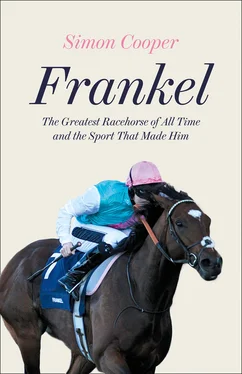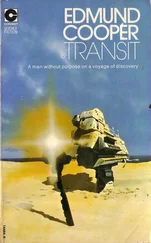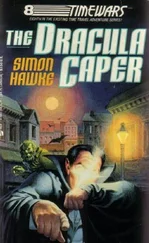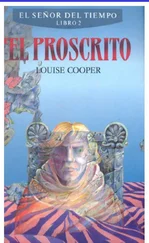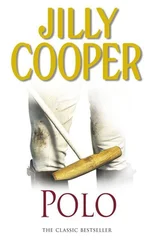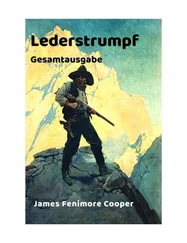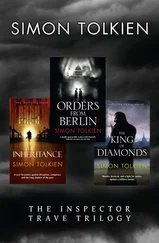For of all the things I didn’t expect to see at Coolmore were cattle; there are more white, large-muscled Charolais, black Aberdeen Angus and the white and brown Simmental beef animals than you might imagine, all mixed in with the mares and foals, sharing the same paddocks and grass. That said, there does seem to be a certain demarcation within each enclosure, with a small herd of cattle, maybe six or eight in all, and a similar numbered harras of horses. Without any suggestion of animosity, they appear to be keeping to very separate groups. So you might wonder, as did I, if they don’t offer any companionship why they are there at all? For surely it can’t be economic; the cattle, even if they run to a few hundred in number across the stud, can’t be worth in aggregate more than a single mare or foal. The answer lies in land management. Horses are horribly fussy eaters of pasture. Look at a field grazed by cattle or sheep and it will be lawn-like; evenly cropped. But a horse paddock will be an unsightly patchwork of the tightly eaten, the almost bare, rank looking tall grass and thrusting weeds. Cattle on the other hand eat it all, keeping the grass both healthy and fertile.
After shock of the incongruity, the cattle soon become part of the scenery; it is really the groups of foals and mares that draw the eye. If you thought the idyll Anna Sewell describes in the opening chapter of Black Beauty was fantasy, think again: ‘While I was young I lived upon my mother’s milk, as I could not eat grass. In the daytime I ran by her side, and at night I lay down close by her.’ This picture-book tale of contented mothers, in the bloom of maternity, letting long-legged foals suckle, idly wafting tails to disperse the first few flies of spring, actually exists. The groups of six or eight are loosely circled both for companionship and out of some long-inherited knowledge that they are safer when in together. Occasionally, a brave foal wanders to the periphery, but a single look or a low snort will draw it back into the fold. The foals are mostly still young – a few days to a few months – and their coats raggedy, with clumps of hair, in contrast to the smooth sheen of the mothers. In time that will change. For now the world offers the sort of great adventures only a young foal would appreciate within the confines of a paddock: fluttering butterflies, buzzing bees and overly bold crows who strut from one fresh horse hoof divot to the next in search of newly exposed worms.
As with Banstead Manor, my trip to Coolmore is part research, part reveal; that moment when I’m presented with the thing I have come to see. Leaving the paddocks, mares and foals, you cross into what might best be described as the inner sanctum. The holy of holies. The place where this story really begins: at the stable of a horse called Galileo, Frankel’s father.
As you approach, the security is discreet but impressive. Twenty-four-hour-a-day guards monitor every arrival and departure. Cameras look upon you. Gates glide open. There is something a little James Bond about it all as the driveway welcomes you, lined with statues of the Coolmore greats. It might seem a little over the top, but behind these gates lie assets. Though they may be in horseflesh form, that is indeed what they are: as valuable as currency, diamonds or works of art, demanding the same level of protection. You think I’m exaggerating? You’ll see.
If, as a horse, you ever had the chance to determine your own paternity, you’d likely choose Galileo. He is the supreme stallion of his generation. In recent history, he might only have been bettered by his father Sadler’s Wells. In the future, he might be bettered by his son Frankel. But I suspect you, along with most others, would be happy to pick him as your father for now. As part of the Northern Dancer dynasty (you recall he was Sadler’s Wells’s father) Galileo was born to be great, but as you might also recall from the auction duds, this does not always turn out to be so. But in his particular case, genetics came up trumps. In a short but explosive career, he was the horse that carried nearly all before him. He raced just once as a two-year-old, slaughtering a field of his contemporaries right at the butt end of the season by fourteen lengths. This began a run of six consecutive wins that continued into the following year when he won the Derby, Irish Derby and King George VI & Queen Elizabeth Stakes. In Europe, as a three-year-old, it is difficult to win a trio of races any better than that, but when he tried to make it seven in a row he tasted his first defeat in the Irish Champion Stakes at Leopardstown before heading to the United States for the Breeders’ Cup Classic, the most valuable race of his life. But whether it was the travelling or racing on the dirt surface for the first time, Galileo’s racing career closed on its 364th day when he came sixth and was retired to stud. That has turned out to be a very wise decision.
My first meeting with Galileo is altogether more friendly than with his famous son. Maybe that’s just a reflection of age; the young buck versus the sage old man. For at just past twenty years of age, Galileo is getting on a bit these days. Perhaps he has mellowed. His groom Noel Stapleton tells me he is incredibly laid back and easy to handle. No quirks. No oddities. Just a particular love of having his teeth and gums rubbed. He arrives in the yard wearing an anonymous green, waterproof horse blanket, with piped red edging. It is early April. The days are still chilly and damp. The trees still bare. Galileo likes to keep dry and warm. It is hardly a big ask for one so valuable.
As Noel goes to strip off the blanket, I feel tempted to say don’t bother. Let the old man be. But Galileo seems up for the inspection. Clearly he doesn’t know how little I know as he pricks his ears, looks me in the eye and nods his head in my direction as if by way of greeting. I keep silent as this amazing stallion is exposed, because I know I really want to see Galileo in the raw. Measure him in my mind against his son. Or maybe I should be measuring the son against the father?
My immediate thought is that Galileo is a bigger horse than Frankel, even though they both stand a shade over 16 hands high. That is, translated into more normal measurement, 65 inches (a hand is 4 inches, an ancient measure based on the breadth of a male hand) taken from the ground beside front leg to the top of the withers, the ridge between the shoulder blades. But the size thing is a marginal difference, for in many respects they are so much the same, though the son is more muscled than the father, but again like demeanour that might just be as much about age as physique. True, Frankel has four white socks (well, that’s what it says on his passport, but really it is three and a half because one is a rather indistinct sock) and his father just the one. Otherwise they are both bays, coats a reddish-brown colour with black mane, tail, insides of the ears and lower legs from just above the knees. Both have those distinctive white stars on their foreheads, though it is Galileo that has the most pronounced, with a more obvious blaze.
As with Frankel, I have the insistent urge to do more than just rub my hand along the horse that had sired not only the greatest racehorse ever but a plethora of other champions. Being petted and handled is almost in the DNA of thoroughbreds; from the very first day of birth it is something they become accustomed to. In fact, they almost expect it. Good horse handlers make a point of it. It becomes a conditioned response for both horse and human. So I take Noel’s tip and rub Galileo’s gums. It is true, he really does like it. And like many a horse he revels in the attention, though what he thinks of the meaningless babble of words I mutter, I do not know. But he takes it all in good part. It has happened thousands of times before, and will, God willing, happen thousands of times again. But, and we have to be realistic, he is coming towards the end of a truly epic life at stud.
Читать дальше
